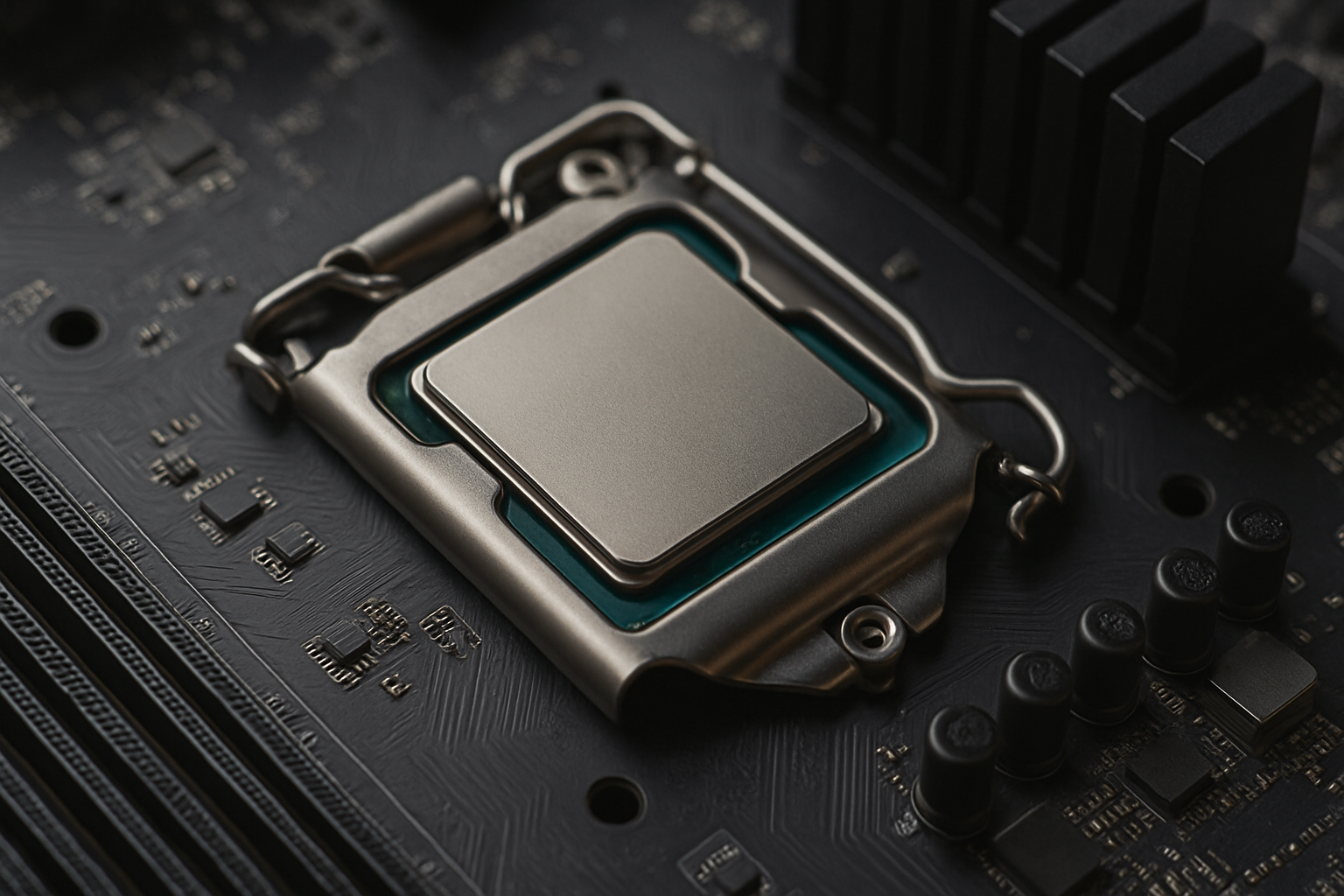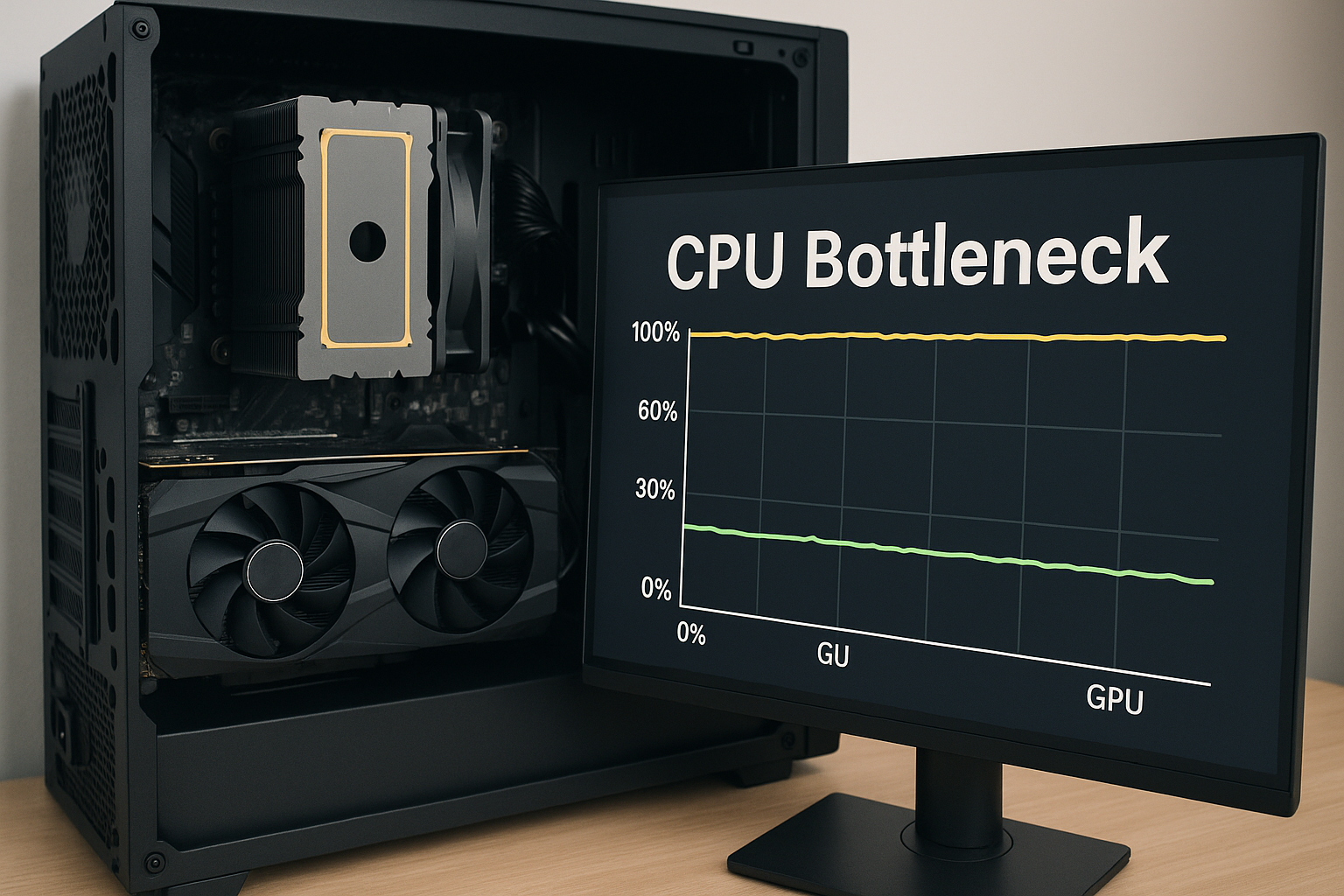
RX 7600 XT Review
AMD Radeon RX 7600 XT Review: Affordable Power for 1080p and Beyond
The AMD Radeon RX 7600 XT enters the market aiming to dominate the budget-to-midrange segment, focusing on excellent 1080p gaming performance with just enough muscle to stretch into 1440p territory. Built on the RDNA 3 architecture, it brings modern features like AV1 encoding, hardware-accelerated ray tracing, and support for AMD's FidelityFX Super Resolution (FSR).
In this review, we dive deep into its specifications, gaming benchmarks, thermal and power efficiency, content creation capabilities, and how it stacks up against both AMD's older GPUs and Nvidia’s options.
Core Specifications
Let’s start with the core specs that define the Radeon RX 7600 XT:
| Feature | RX 7600 XT |
|---|---|
| Architecture | RDNA 3 |
| Stream Processors | 2048 |
| Base Clock | 2.3 GHz |
| Boost Clock | 2.75 GHz |
| VRAM | 16GB GDDR6 |
| Memory Bus | 128-bit |
| Infinity Cache | 32MB |
| TDP | 190W |
| PCIe Interface | PCIe 4.0 x8 |
| Display Outputs | 1x HDMI 2.1, 3x DisplayPort 2.1 |
The 16GB of VRAM is a welcome sight at this price point, offering more future-proofing compared to competitors like the RTX 4060's 8GB.
Gaming Performance: 1080p and 1440p
We benchmarked the RX 7600 XT across a variety of games to measure its true real-world performance.
1080p Ultra Settings
| Game | Average FPS |
|---|---|
| Cyberpunk 2077 (FSR 2 Balanced) | 78 FPS |
| Call of Duty: Warzone 2.0 | 132 FPS |
| Fortnite (Epic Settings) | 184 FPS |
| Baldur’s Gate 3 | 99 FPS |
| Resident Evil 4 Remake | 106 FPS |
| Apex Legends | 215 FPS |
| Forza Horizon 5 | 142 FPS |
The RX 7600 XT easily handles 1080p Ultra settings in almost every modern title, even the most demanding ones.
1440p High Settings
| Game | Average FPS |
|---|---|
| Cyberpunk 2077 (FSR 2 Balanced) | 52 FPS |
| Call of Duty: Warzone 2.0 | 96 FPS |
| Fortnite (Epic Settings) | 140 FPS |
| Baldur’s Gate 3 | 75 FPS |
| Resident Evil 4 Remake | 82 FPS |
| Apex Legends | 162 FPS |
| Forza Horizon 5 | 109 FPS |
While 1440p is more demanding, with smart settings tweaks or FSR enabled, the RX 7600 XT offers a very playable experience.
Ray Tracing Performance
Ray tracing remains the Achilles' heel of AMD’s midrange cards, but there have been improvements thanks to RDNA 3.
| Game | Ray Tracing ON (Native) | Ray Tracing ON (FSR Enabled) |
|---|---|---|
| Cyberpunk 2077 (Medium RT) | 32 FPS | 58 FPS |
| Control (High RT) | 44 FPS | 77 FPS |
| Hogwarts Legacy (Medium RT) | 36 FPS | 61 FPS |
Without FSR, the frame rates struggle to stay smooth, but with upscaling, ray tracing becomes quite playable — especially at 1080p.
Thermals, Noise, and Power Efficiency
AMD’s 6nm manufacturing process helps keep things cool and quiet.
| Metric | RX 7600 XT |
|---|---|
| Peak GPU Temperature | 67°C |
| Idle Temperature | 34°C |
| Average Gaming Load Temp | 62°C |
| Maximum Fan Noise | ~34 dB |
| Typical System Power Draw (Gaming) | ~310W |
You won't need heavy-duty cooling with this GPU, making it ideal for smaller or quieter builds.
Content Creation and Productivity Performance
The RX 7600 XT isn’t just for gamers — it also provides reasonable performance for streamers, video editors, and 3D artists.
| Application | Performance (Relative to RX 6600 XT) |
|---|---|
| Adobe Premiere Pro | +12% faster |
| DaVinci Resolve Studio | +15% faster |
| Blender Rendering (Cycles) | +18% faster |
| AV1 Encoding Support | Yes |
If you’re looking to game and stream simultaneously, or if you dabble in creative workloads, the RX 7600 XT will handle lighter tasks well.
RX 7600 XT vs Competition
Here’s how the RX 7600 XT stacks up against two key competitors:
| GPU | MSRP | VRAM | 1080p Gaming | Ray Tracing Performance | Content Creation |
|---|---|---|---|---|---|
| AMD RX 7600 XT | $329 | 16GB GDDR6 | Excellent | Decent | Good |
| NVIDIA RTX 4060 | $299 | 8GB GDDR6 | Very Good | Better (DLSS 3) | Great |
| AMD RX 6700 XT (Discounted) | ~$369 | 12GB GDDR6 | Excellent | Slightly Worse | Good |
The 7600 XT excels when VRAM and raw rasterization matter, but Nvidia’s 4060 wins in ray tracing and AI-enhanced gaming with DLSS 3.
Final Verdict
The AMD Radeon RX 7600 XT is a fantastic card for gamers on a budget who want smooth 1080p experiences and reasonable 1440p performance without emptying their wallet. It combines generous VRAM, strong efficiency, and better-than-expected ray tracing with AMD's competitive FSR upscaling.
Its biggest weakness remains heavy ray tracing workloads where Nvidia still holds a clear advantage. However, if you prioritize high frame rates, future-proof VRAM, and energy efficiency, the RX 7600 XT offers outstanding value.
| Who Should Buy | Who Should Wait |
|---|---|
| 1080p Ultra Gamers | Gamers Focused Heavily on Ray Tracing |
| Budget-Conscious Builders | 4K High Refresh Enthusiasts |
| Small Form Factor Enthusiasts | AI/Content Creators Needing CUDA |
Final Score: 4.2 / 5
Why 4.2?
-
+ Great 1080p performance
-
+ Big 16GB VRAM buffer
-
+ Cool and quiet operation
-
+ Competitive pricing
-
− Ray tracing still not top-tier
-
− 128-bit memory bus can limit 1440p longevity
Quick Summary
| Pros | Cons |
|---|---|
| Excellent 1080p Gaming | Ray Tracing Not as Strong as Nvidia |
| Cool, Quiet, Efficient | 128-bit Bus Limits Some 1440p Games |
| Competitive Pricing | Slightly Weaker AI Features Compared to DLSS |

